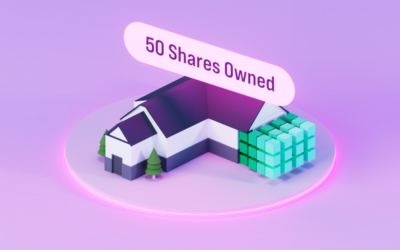Cap rate is one of the most important real estate investing metrics. It measures the Net Operating Income (NOI) divided by the market value of the real estate asset.
The world of investing can be filled with technical jargon. Real estate investing is no different. Let’s get familiar with some of the most common terms that can benefit someone new to real estate estate investing.
Capitalization rate (“cap rate”) is a key metric that investors track when evaluating potential real estate investments or measuring the performance of their existing portfolio.
Cap rate is the rate of return expected from the income that a property generates.
The cap rate formula is:
Cap Rate = Net Operating Income / Current Market Value
There are two key considerations here.
First, what is the definition of net operating income (NOI) and second, how do we accurately measure the current market value of the asset?
Net operating income refers to a property’s profitability. In order to calculate NOI, you must take its annualized income (typically rent from tenants) and subtract the annualized operating expenses like repairs, insurance, property management fees, and property taxes. The remaining amount after all reductions is the property’s NOI, or profit for that time period.
Net Operating Income = Annualized Income – Annualized Expenses
Current market value refers to the value of the property in today’s market. We use today’s value to create a fair comparison between assets with different acquisition dates. Otherwise, a property acquired in 1980 would look much more lucrative than something purchased last year. To find the current market value, real estate investors look at comparable properties in the area, recently sold properties, and other factors like price per square foot. It’s important to note that the market value of a property is constantly changing.
For investors looking to acquire real estate properties, cap rate is important because it shows how they can turn their existing capital into a stream of recurring revenue.
Lastly, you should know that cap rate is expressed as a percentage that can be positive or negative. A negative cap rate means that a property is losing money every year. Instead of generating net operating income, this property is generating a net operating loss.
Let’s walk through two examples to see cap rate in action.
Cap Rate Example
Investment A
- Current Market Value: $1,000,000
- Net Operating Income: $85,000
For Investment A, we are given the two numbers that we need to calculate cap rate.
Cap Rate = Net Operating Income / Current Market Value
Cap Rate = $85,000 / $1,000,000
Cap Rate = 0.085
Cap Rate = 8.5%
Now let’s explore Investment B, which needs a little more work.
Investment B
- Current Market Value: $250,000
- Expected Income (Monthly): $4,000
- Expected Expenses (Monthly): $1,900
First, we start by solving for NOI.
Net Operating Income = Expected Income – Expected Expenses
Net Operating Income = $4,000 – $1,900
Net Operating Income = $2,100
Since this number is given to us monthly, we have to make a yearly number by multiplying by 12. In our case, the annual NOI is $25,200.
Now that we have the correct numerator, let’s solve for the capitalization rate.
Cap Rate = Net Operating Income / Current Market Value
Cap Rate = $25,200 / $250,000
Cap Rate = 0.1008
Cap Rate = 10.08%
By looking at the NOI alone, it looks like Investment A generates more money for investors. But given that its purchase price is four times higher, it actually provides a lower percentage return. Investment B has a higher cap rate and thus is a better investment strictly based upon the cap rate given the information we have.
What Does a 5% Cap Rate Mean?
A 5% cap rate means that a property is generating a positive cash flow each year and for every $100,000 invested, the investor will receive $5,000 a year in profit.
Cap rate is used to assess the cash flow potential of a property. All things equal, investors will want a higher cap rate.
Keep in mind, cap rate does not factor in the appreciation of the property.
Cap rate is not a measure of total return, only of the income generating potential of a property.
Cap Rate vs. IRR
As mentioned above, cap rate measures the cash flow that a real estate property can generate. Cap rate does not take into account the appreciation of the underlying asset.
To look at total return, investors should look at the internal rate of return (IRR).
Internal rate of return is a financial measure that looks at the total return of a project or investment. The IRR takes into account total cash outflows (initially and every year thereafter) compared to the total cash inflows (through rent, price increase, etc.).
IRR is always expressed as a percentage, not in absolute dollar terms.
As such, a more thorough financial analysis would evaluate the cap rate, internal rate of return, and the actual dollars generated from an investment all together.
Summary
Capitalization rate shows the cash generating potential of a real estate investment property. Cap rate is one of the most important metrics that investors and underwriters look for.
The cap rate formula is net operating income (NOI) divided by the property’s current market value. NOI is a property’s profitability, and you find it by subtracting operating expenses from operating income.
Current market value is not the same as the purchase price. The market value is determined by what the property would be worth today. You calculate this number by looking at similar properties.
First, capitalization rate is not a measure of total return as it does not incorporate the price increase of a property.
Second, cap rate is highly sensitive to small changes in leverage or monthly cash flow. When projecting cap rate into future periods, subtle mistakes or errors in the financial modeling can lead to changes in the expected return.



